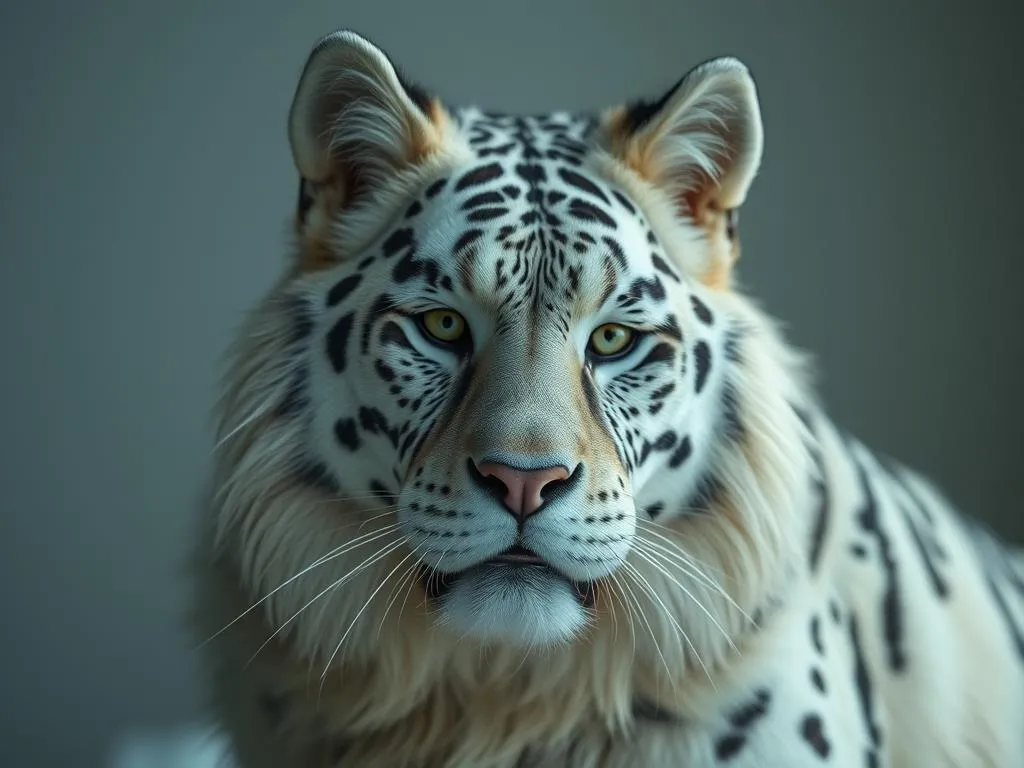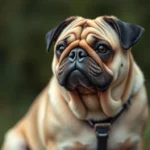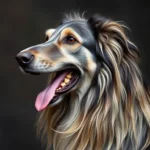
Introduction
When considering adding a dog to your family, it’s crucial to understand the variety of dog breeds available. Each breed comes with its unique characteristics, temperament, and care requirements. Choosing the right breed ensures that you find a companion who fits your lifestyle and family dynamic.
Among the myriad of breeds, the Alusky stands out as a captivating hybrid. This breed combines the majestic Alaskan Malamute and the spirited Siberian Husky. Known for their striking appearance and lively personality, Aluskies have garnered attention from dog lovers around the world.
In this article, we’ll delve into the world of the Alusky. We will explore their origins, physical characteristics, temperament, care requirements, and suitability for families, ensuring you have all the information needed to determine if this breed is the right fit for you.
Understanding Dog Breeds
What is a Dog Breed?
A dog breed is a specific group of domestic dogs that share common characteristics, including physical traits, temperament, and behaviors. Breeds have been developed over centuries for a variety of purposes, from herding livestock to companionship and protection. Understanding the significance of these breeds can greatly enhance the dog ownership experience.
Historically, dog breeds were developed to meet the practical needs of humans. For instance, the Alaskan Malamute was bred for strength and endurance to haul heavy sleds, while the Siberian Husky was designed for speed and agility in pulling sleds over long distances. This historical context not only explains the development of specific breeds but also highlights the importance of breed characteristics in choosing a pet.
The Importance of Breed Characteristics
When selecting a dog, understanding breed characteristics is vital. Some key traits include:
- Temperament: Different breeds exhibit varying levels of friendliness, aggression, and protectiveness.
- Size: Breeds range from tiny toy breeds to large working dogs, affecting living space and care needs.
- Energy Levels: Some breeds require more exercise and mental stimulation than others.
- Lifespan: Understanding the average lifespan can help in planning for long-term care.
The Alusky Breed
Origin of the Alusky
The Alusky is a relatively new hybrid breed, resulting from the crossbreed of the Alaskan Malamute and the Siberian Husky. Both parent breeds have rich histories rooted in the Arctic regions, where they were bred for their endurance and ability to work in harsh climates.
- Alaskan Malamute: This breed dates back to the indigenous Mahlemut people of Alaska, who relied on them for heavy hauling.
- Siberian Husky: Originally bred by the Chukchi people in Siberia, Huskies were used for pulling sleds over long distances.
The combination of these two breeds results in a dog that possesses the strength of the Malamute and the agility of the Husky, making the Alusky a remarkable hybrid.
Physical Characteristics
An Alusky typically showcases a blend of its parent breeds’ physical traits. Here are some characteristics to note:
- Size and Weight: Aluskies generally weigh between 50 to 80 pounds and stand about 20 to 25 inches tall at the shoulder. Their size can vary based on which parent breed they take after more.
- Coat Type and Colors: They often have a thick double coat, which can come in various colors, including black, gray, red, and sable, often with striking white markings.
- Distinctive Features: Aluskies frequently exhibit captivating features such as blue, brown, or even one of each eye color. Their ears are typically erect and triangular, contributing to their alert appearance.
Temperament and Behavior
The temperament of an Alusky is a blend of both parent breeds, resulting in a dog that is generally friendly, energetic, and intelligent. Key personality traits include:
- Social Nature: Aluskies are known for being social and enjoy the company of people and other pets. They thrive in environments where they can interact with their family.
- Playfulness: Their playful demeanor makes them great companions for children, as they often engage in activities and games.
- Intelligence: This breed is highly intelligent but can be stubborn, making training a vital part of their upbringing.
Socialization is crucial for Aluskies to ensure they grow up to be well-adjusted dogs. Introducing them to various people, environments, and other animals from an early age will help in developing their social skills.
Care Requirements for Aluskies
Nutrition
Feeding your Alusky a balanced diet is essential for their health and energy levels. Recommendations include:
- Recommended Diet: High-quality dog food that is appropriate for their age, size, and activity level is crucial. Look for foods that list whole meats as the first ingredient.
- Common Dietary Issues: Aluskies can be prone to obesity if overfed or not exercised adequately. Monitor their weight and adjust food portions accordingly.
- Feeding Schedule Tips: Establish a consistent feeding schedule, typically twice a day, to help regulate their eating habits.
Exercise Needs
Aluskies are an active breed that requires significant physical activity. Here’s how to keep them fit:
- Importance of Physical Activity: Regular exercise is crucial for their physical and mental health. Lack of exercise can lead to behavioral issues and weight gain.
- Recommended Daily Exercise Routines: Aim for at least 60-90 minutes of exercise daily. This can include walks, runs, and playtime in a secure yard.
- Fun Activities and Games: Engage them in activities like fetch, agility training, and even hiking, which can provide both physical exertion and mental stimulation.
Grooming
Maintaining your Alusky’s coat and overall hygiene is essential for their health:
- Coat Care: Their thick double coat requires regular brushing, ideally 2-3 times a week, especially during shedding seasons.
- Bathing Guidelines: Bathe them only as needed to avoid stripping their coat of natural oils. Typically, this is every few months.
- Ear and Teeth Care: Regularly check and clean their ears to prevent infections, and brush their teeth several times a week to maintain dental health.
Health Considerations
Common Health Issues
Like all breeds, Aluskies can be susceptible to certain health issues, often inherited from their parent breeds. Common concerns include:
- Hip Dysplasia: A genetic condition that affects the hip joint, leading to arthritis and discomfort.
- Eye Disorders: Both parent breeds can suffer from conditions like cataracts and progressive retinal atrophy.
- Routine Health Checks: Regular vet visits are essential for vaccinations and early detection of potential health issues.
Preventative Care
Preventative care plays a vital role in maintaining your Alusky’s health:
- Importance of Regular Vet Check-ups: Schedule annual health check-ups to monitor their overall health and catch issues early.
- Recommended Health Screenings: Discuss with your vet about specific screenings that are beneficial for Aluskies, such as hip and eye exams.
Training an Alusky
Basic Training Techniques
Training an Alusky is essential for their development and behavior:
- Importance of Early Training: Start training early to instill good behaviors and social skills.
- Recommended Training Methods: Utilize positive reinforcement techniques, rewarding them with treats and praise for good behavior. Consistency is key in training sessions.
Behavioral Challenges
While Aluskies are generally well-behaved, they can present some challenges:
- Common Behavioral Issues: Stubbornness is a common trait, and they may also experience separation anxiety if left alone for long periods.
- Tips for Addressing Challenges: Establish a routine and provide mental stimulation through puzzle toys and interactive games to keep them engaged.
Socialization
Socialization is vital for an Alusky to become a well-rounded dog:
- Importance of Socializing: Expose them to various environments, people, and pets to build confidence and reduce fearfulness.
- Best Practices: Arrange puppy playdates or enroll them in training classes to enhance their social skills.
Living with an Alusky
Ideal Living Conditions
An Alusky thrives in environments that cater to their needs:
- Space Requirements: While they can adapt to apartment living, a house with a yard is preferable. They need space to run and play.
- Climate Considerations: This breed is well-suited for colder climates due to their thick coat; extreme heat can be challenging for them.
Compatibility with Families
Aluskies can make wonderful family pets:
- Best Family Dynamics: They do well in active households where they can engage with children and adults alike.
- Activities for Families: Families can enjoy hiking, playing fetch, or simply spending time outdoors, which aligns well with the energetic nature of Aluskies.
Adoption and Rescue
If you decide to welcome an Alusky into your home, consider adopting:
- Where to Find Aluskies for Adoption: Check local shelters, breed-specific rescues, and online platforms dedicated to pet adoption.
- Importance of Responsible Breeding and Adoption Practices: Ensure you choose reputable breeders or rescues that prioritize the health and well-being of their dogs.
Conclusion
The Alusky is a vibrant and engaging breed, ideal for families seeking an active companion. With their striking appearance and friendly nature, they can quickly become a beloved member of the household. Understanding their characteristics, care requirements, and training needs is critical to ensuring a happy life for both you and your Alusky. If you are ready for an energetic and loyal friend, consider adopting an Alusky to enrich your life with love and companionship.









